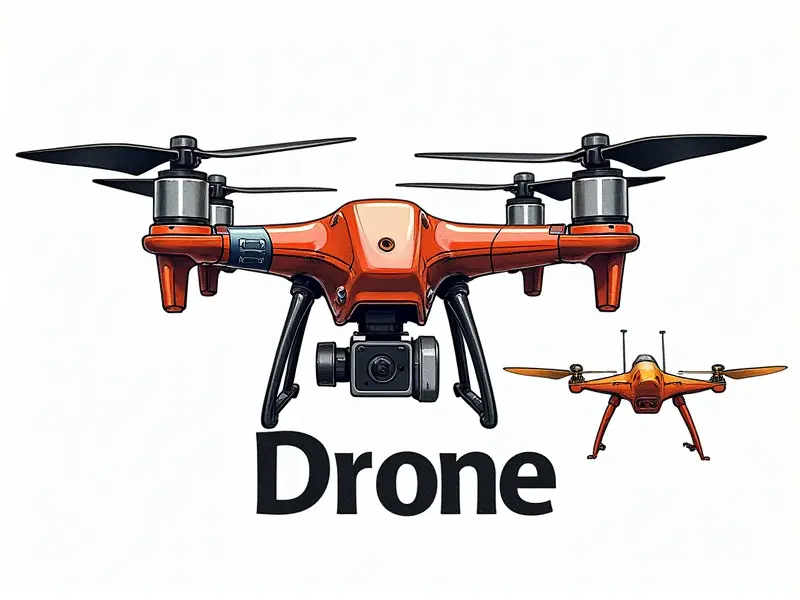Drone flying over forests tips

Top Tips for Flying Drones in Forests
Flying drones over forests presents unique challenges and opportunities. Whether you're a seasoned pilot or just starting out, mastering the art of flying drones through dense foliage can yield breathtaking aerial footage and valuable data. This article will provide an essential guide to navigating the complexities of forest drone photography.
Mastering Drone Flight Over Dense Trees
Flying over dense trees requires precision and skill. Here are some tips for maneuvering your drone safely through thick foliage:
- Select a powerful, agile model: Choose a drone with strong motors and responsive controls.
- Plan your route: Use satellite imagery to map out the most efficient flight paths around obstacles.
- Leverage GPS technology: Utilize advanced GPS features for precise navigation in forested areas.
Exploring Forest Canopies with Your Drone
The canopy layer of a forest is a fascinating world waiting to be explored. Here’s how you can capture stunning images and videos from this unique vantage point:
- Opt for high-resolution cameras: Use drones equipped with high-quality cameras capable of capturing detailed aerial shots.
- Adjust flight altitude: Experiment with different heights to find the best viewpoint for your desired shot.
- Leverage thermal imaging: Consider using a drone with thermal camera capabilities to capture temperature variations in the canopy.
Essential Skills for Flying Drones in Woods
To become proficient at flying drones through forests, you need to hone several key skills:
- Navigational awareness: Develop a keen sense of direction and spatial orientation.
- Rapid decision-making: Practice quick reactions to avoid obstacles and maintain control.
- Technical expertise: Learn about drone mechanics, battery life, and sensor capabilities.
Best Practices for Drone Photography in Woodlands
Finding the right balance between creativity and safety is crucial when shooting aerial photos or videos in woodlands. Here are some best practices to follow:
- Observe weather conditions: Avoid flying during windy or rainy days.
- Respect wildlife: Be mindful of nesting birds and other animals when operating your drone.
- Engage with local communities: Seek permission from landowners before flying over private property.
Avoiding Obstacles: Drone Flying in Forests
Navigating through dense vegetation can be challenging. Here’s how to avoid common obstacles:
- Use real-time obstacle detection: Equip your drone with advanced sensors for automatic obstacle avoidance.
- Conduct a pre-flight survey: Scan the area beforehand using ground-based equipment or satellite imagery.
- Maintain line-of-sight: Keep visual contact with your drone to quickly react if it encounters an obstacle.
Capturing Stunning Shots: Forest Drone Tips
To capture breathtaking aerial shots in the forest, consider these tips:
- Experiment with lighting: Capture dawn or dusk for dramatic shadows and colors.
- Incorporate natural elements: Frame your shots around trees, water features, and wildlife to add context.
- Vary angles and perspectives: Combine overhead shots with close-up details to create dynamic compositions.
Safe and Legal Drone Flying in Forests
Safety and legality are paramount when flying drones over forests. Familiarize yourself with local regulations and follow these guidelines:
- Register your drone: Ensure compliance with federal aviation authorities.
- Avoid restricted areas: Stay clear of military installations, airports, and other no-fly zones.
- Respect privacy laws: Be mindful of individuals’ rights when flying over populated or private lands.
Advanced Techniques for Forest Drone Piloting
To take your forest drone photography to the next level, explore these advanced techniques:
- Leverage 3D modeling software: Use specialized tools to create detailed topographical maps of woodland areas.
- Incorporate multi-spectral imaging: Employ drones equipped with sensors that detect various wavelengths for scientific applications.
- Integrate AI algorithms: Utilize artificial intelligence to automate data collection and analysis processes.
Flying Drones Safely Through Forested Areas
Safety should always be your top priority when flying drones in wooded areas. Here are some safety measures to follow:
- Wear protective gear: Use helmets and gloves to safeguard against potential accidents.
- Carry emergency supplies: Bring a first aid kit, extra batteries, and communication devices.
- Stay informed about weather changes: Monitor conditions closely before and during flights.
Essential Guide to Flying Drones in Woodlands
To fully enjoy the benefits of drone photography in woodlands, adhere to these essential guidelines:
- Learn from experienced pilots: Seek mentorship or attend workshops for hands-on training.
- Practice regularly: Gain experience by flying your drone in various environments and conditions.
- Stay updated on technology advancements: Keep abreast of new features and innovations that can enhance your aerial photography capabilities.
Conclusion
Flying drones over forests offers a unique opportunity to explore and document the natural world from an unprecedented perspective. By mastering essential skills, adhering to best practices, and embracing advanced techniques, you can capture stunning aerial shots while ensuring safety and compliance with regulations. Whether you're an enthusiast or a professional photographer, these tips will help elevate your forest drone photography experience.

